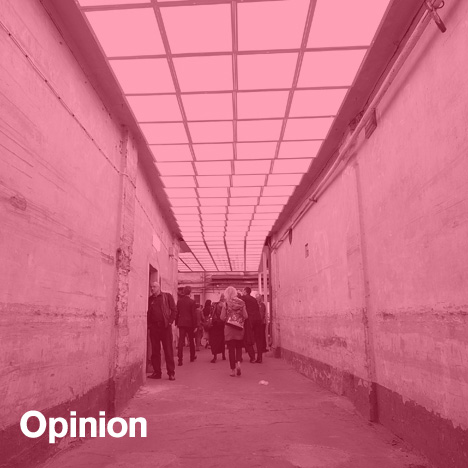
"Design, fashion and architecture hold something mysterious in the objects they produce"
Opinion: one of Soviet-era Riga's most notorious buildings is now home to an exemplary exhibition that shows how design can be used to tell profound stories about complex political and social histories, says Kieran Long.
The stately, classical building on the corner of Brīvības Street and Stabu Street in Riga is the work of one of Latvia's most prolific architects: Aleksandrs Vanags. Vanags' light, eclectic classicism forms an art historical bridge from the art deco that Riga is famous for today to a more international classicism that he brought to the Latvian capital.
Vanags made his studio in the building late on in his career, and you can imagine why. In a simple perimeter block, he runs through the gamut of his architectural repertoire: folky, translucent glass at the ground floor, upper stories with loggia balconies between giant order half columns, and a roofline of distracting variety. He caps it off for good measure with a kind of Teutonic helmet on the corner tower.
Vanags died in 1919, and it was 1940 when his building assumed its notorious role as the headquarters of the Cheka, the Soviet security service, that it retained it until Latvia's independence in 1991. The building was nicknamed the Corner House in those years, when a doorway right on the corner led into a tiny room where citizens could leave anonymous tip offs for the secret police about their fellow citizens, and where relatives of the detained or disappeared would go to try to find out what had happened to their loved ones.
Riga is European Capital of Culture this year, and the Corner House opened to the public on 1 May for the first time ever. Four exhibitions are installed on the upper floors, and the ground floor is mainly left untouched, with a few panels of information about the history of the building. I visited on the second, with hundreds of Latvians touring the rooms where the fates of some of their grandmothers and fathers were decided.
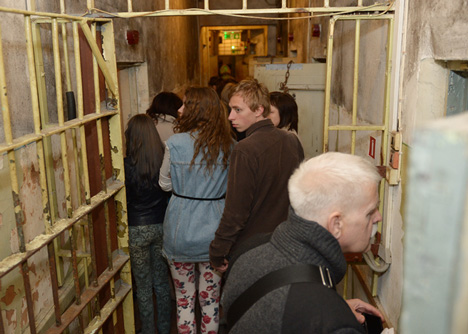
The ground floor of the building is more or less as it has been since the 1990s, empty and semi derelict. Most horrifying is the room (you can look in but not enter) where summary executions were carried out by the KGB. Standing there shoulder to shoulder with people who lived in fear of such a fate is an experience of European history that leaves a deep impression. That cell is an ominous box of foot-thick concrete, a design feature that dulled the sound of the pistol shot to the back of the head that met those who entered.
The most intriguing space though was the small room that functioned as a kind of reception area for the public an interior that articulates perfectly the character of oppression and violence that the KGB visited upon the citizens of the Latvian capital. The laminated wood compartment, around two metres by three metres, is the only "public" room of the complex and is staggering in its sheer ordinariness. There's a couple of chairs, one internal door (which would have been locked from the inside), a small window, and a veneered wood letterbox, standing on the ground about waist height, with a small slot in the top. This is where condemnatory notes were posted by members of the public, anonymously, to the KGB. To use an anachronism, and by now a cliche, this room is the clearest expression of Hannah Arendt's "banality of evil" I have ever experienced.
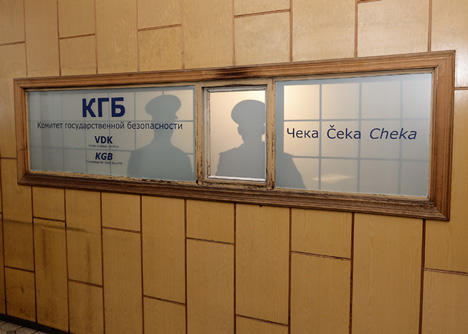
You might imagine that this setting would overwhelm any attempt to curate it, or make an exhibition there, but that is not the case here thanks to the committed and earnest work of the Capital of Culture curators. The exhibitions do not directly address the history of the building, but take as their inspiration the capacity of things to tell complex and sometimes deeply sinister stories. A Latvian's Suitcase describes various generations of Latvian migration through the objects that those migrants took with them, from clothing and silver spoons to a yeast culture used to make Latvian bread for generations in America.
Another show, (Re)construction of Friendship, invites contemporary artists from Latvia and abroad to look at art's relationship to social and national identities and relationships. Perhaps most striking were the plates designed by Ukrainian artist Nikita Kadan, showing drawings of torture techniques used by the Ukrainian police in recent years. These pieces resonated with the history of the building, but also with the perilous situation in which Russia and Ukraine find themselves at the moment.
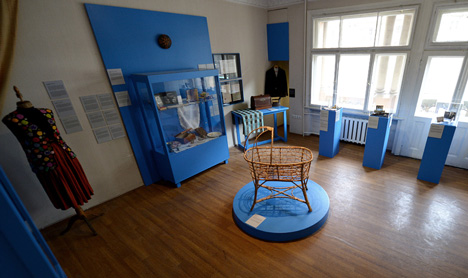
But one exhibition really showed why it is design rather than art that tells us the most profound stories about complex political and social histories. Stories About Man and Power in 10 Objects appears to be a clever way of parsing Latvia's national history, a history that involves so many moments of terrible treatment by Russia, Germany, Russia again etc etc that you can be forgiven for failing to get your head round it. In fact what comes across is how designed things are like anchors, they tether people to their identities, and survive them as poignant reminders of what people thought was worth fighting and dying for.
The first object you come across is a 100-year-old, German-made piano accordion, a beautiful object in remarkably good condition. The exhibition tells you the story of its manufacture and design, but also surrounds it with the remarkable context of anti-Bolsheviks in Riga after the First World War. The accordion in the exhibition was played near the doorway of secret meetings to mask the sound of the discussions inside from prying ears.
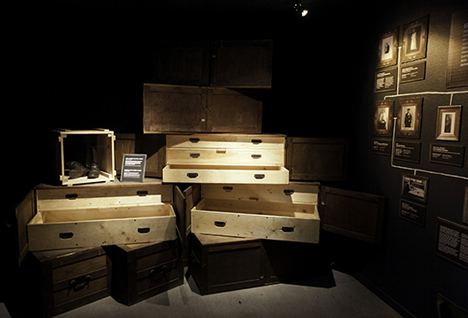
A pair of Wehrmacht boots is the last of the ten objects. They were worn by Merija Grinberga, a heroic curator from Latvia's national museum, who accompanied the museum collection across Europe after the Nazis ordered it decanted away from the front line in 1944. She cared for the collections in the Czech Republic for two years then accompanied the crates back in 1946 when Latvia was under USSR control. However, her new Russian bosses mistrusted what they suspected as collaboration with the Nazis and eventually sacked her.
The boots are palpable, real evidence, objects that provoke the imagination like no others could. Perhaps it is the their use value that makes our relationship with them so profound. We can imagine them on our body, even if the specific circumstances she faced are unimaginable to us. Perhaps we can imagine our own sense of discomfort at wearing part of a Nazi uniform, and then imagine how she must have felt doing so at the end of a war that devastated her country. Perhaps it is simply that the boots were worn on the body of a woman who is now gone.
Go to Riga, see this remarkable building, and come back convinced that design, fashion and architecture hold something mysterious in the objects they produce, something that puts our bodies in relationship to those of people from the past. It is sobering and inspiring in equal measure.
Images are courtesy of Riga 2014.
Kieran Long is senior curator of contemporary architecture, design and digital at the Victoria & Albert Museum. He presents Restoration Home and the series The £100,000 House for the BBC, and is currently the architecture critic for the Evening Standard newspaper.